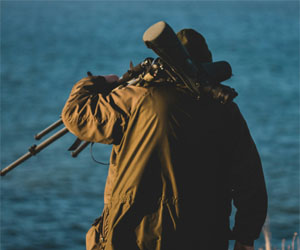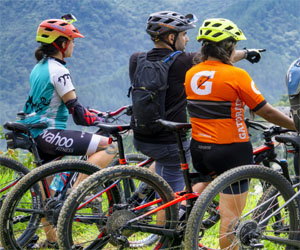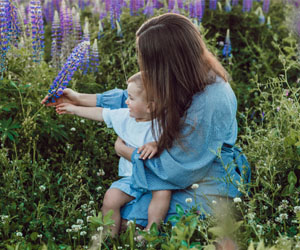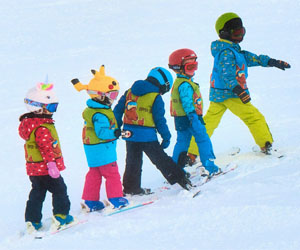


A Delightful Journey Into Nature's Avian Tapestry

Birdwatching, often referred to as the "art of birdwatching," is a pastime that invites enthusiasts to explore the world of feathers, melodies, and colors. It's more than just observing birds; it's about cultivating an appreciation for the natural world, honing one's skills, and connecting with the avian realm in a profound way. In this article, we'll delve into the art of birdwatching, exploring the elements that make it a delightful and enriching journey.
Patience And Observation: At the core of birdwatching is the practice of patience and keen observation. Birdwatchers learn to scan the landscape, often for extended periods, waiting for that fleeting moment when a bird reveals itself. The art lies in the ability to notice subtle details, from the distinctive plumage patterns to the unique behaviors that define each species.
The Language Of Birds: Birdwatching introduces enthusiasts to the intricate language of birds. Through songs, calls, and visual displays, birds communicate with one another, and keen birders become fluent in this avian dialect. They can distinguish between the warning call of a robin and the joyful song of a thrush.
Identification And Expertise: The art of birdwatching involves learning to identify different bird species accurately. This skill requires an understanding of field marks, such as coloration, size, shape, and distinctive features. Birdwatchers often invest in field guides and apps to assist in this endeavor.
Habitat Exploration: Birdwatching is about more than just birds; it's also a journey into the diverse habitats that birds call home. Enthusiasts learn about the ecosystems, plants, and environmental conditions that support avian life. This ecological understanding enhances the appreciation of the interconnectedness of all living things.
Photography And Art: Many birdwatchers extend their artistic pursuits by capturing the beauty of birds through photography or art. It's a way to express the awe and wonder they experience in the avian world. Whether through sketches, paintings, or photographs, these creations become a reflection of the birdwatcher's connection with nature.
Conservation Ethic: The art of birdwatching often nurtures a deep commitment to conservation. Birdwatchers understand the fragility of bird habitats and the challenges that avian species face in a changing world. As stewards of the environment, they advocate for the protection and preservation of these vital ecosystems.
Community And Sharing: Birdwatching is a communal experience. Enthusiasts join local birding clubs, engage in online forums, and share their observations and knowledge. The sense of community adds a social aspect to the hobby, where birders can exchange tips, stories, and experiences.
Mindfulness And Connection: Birdwatching encourages mindfulness, a state of being fully present in the moment. As birdwatchers immerse themselves in the sights and sounds of the natural world, they connect deeply with nature, experiencing a sense of tranquility and oneness with the environment.
The art of birdwatching is a delightful journey into the intricate and captivating world of birds. It combines patience, observation, and a deep appreciation for the natural world. Whether you're a novice or an experienced birder, the art of birdwatching offers endless opportunities for learning, discovery, and a profound connection with nature. So, pick up a pair of binoculars, take a hike through a local park or venture into the wilderness, and let the avian tapestry of colors and melodies inspire your own artistic and ecological journey.
 Safety First: Safety should be your top priority. Always wear a properly fitted helmet and gloves, and consider protective gear like knee and elbow pads. Ensuring that your bike has functioning brakes and reliable tires is essential for a safe ride.
Safety First: Safety should be your top priority. Always wear a properly fitted helmet and gloves, and consider protective gear like knee and elbow pads. Ensuring that your bike has functioning brakes and reliable tires is essential for a safe ride.
Choose The Right Trail: Start on beginner-friendly trails. Look for well-marked, easy-to-moderate paths that provide a comfortable introduction to mountain biking. These trails typically have fewer obstacles and gentler inclines, making them ideal for beginners.
Learn The Techniques: Mountain biking involves specific techniques that are important for both safety and enjoyment. Focus on body positioning, balance, and weight distribution to maintain control on uneven terrain. Learning to navigate obstacles, handle steep descents, and manage your speed on downhills is crucial.
Ride With Others: Riding with experienced friends or joining a beginner's group ride can be immensely helpful. You can learn from their experience and get tips on tackling obstacles or mastering techniques. Additionally, riding with others can provide a sense of camaraderie and motivation.
Gradual Progression: Don't rush your progression. As you gain confidence and skills, you can start exploring more challenging trails. It's important to understand your limits and gradually push them while staying within your comfort zone.
Be Mindful Of The Environment: Respect the natural environment and the trails you ride on. Follow trail rules and guidelines, and avoid disturbing wildlife or damaging the terrain. Leave no trace and help maintain the beauty of the outdoors.
Stay Hydrated And Fuel Up: Mountain biking can be physically demanding, so carry water and energy snacks.
Nurturing Nature While Exploring
 Sustainable Gear And Practices: Eco-conscious adventurers understand that the gear they choose can have a significant environmental impact. They opt for eco-friendly and sustainable equipment, such as recyclable and biodegradable materials. Additionally, they practice responsible resource management by conserving water, reducing energy consumption, and minimizing waste generation during their journeys.
Sustainable Gear And Practices: Eco-conscious adventurers understand that the gear they choose can have a significant environmental impact. They opt for eco-friendly and sustainable equipment, such as recyclable and biodegradable materials. Additionally, they practice responsible resource management by conserving water, reducing energy consumption, and minimizing waste generation during their journeys.
Low-Impact Camping: Camping is an integral part of wilderness journeys, and eco-conscious adventurers are known for their low-impact camping practices. This involves setting up camp in designated areas, using portable stoves for cooking instead of open fires, and following the "Leave No Trace" camping guidelines to ensure that the natural surroundings remain unspoiled.
Wildlife Observation And Conservation: Eco-conscious wilderness journeys often involve opportunities for wildlife observation. Rather than disrupting the animals they encounter, eco-conscious adventurers approach wildlife with respect and care. They maintain a safe distance and use binoculars or telephoto lenses to avoid causing distress to the animals. Moreover, many eco-conscious adventurers participate in wildlife conservation efforts and support organizations dedicated to preserving natural habitats.
A Journey Of Progress In Skiing And Snowboarding
 The Beginner Stage:
The Beginner Stage:
As a novice, the journey begins with a focus on mastering the fundamental skills. For both skiing and snowboarding, this includes:
1. Equipment Familiarization: You'll become acquainted with your gear, which includes skis, boots, and poles for skiing, or a snowboard and boots for snowboarding. Proper equipment is crucial for safety and performance.
2. Balance And Stance: Finding the right balance and learning how to stand and glide on your equipment is the cornerstone of successful skiing and snowboarding. Beginners often start by practicing on gentle slopes to develop their balance.
3. Turning And Stopping: Learning how to turn and stop effectively is key to controlling your speed and navigating the slopes safely. Novices generally begin with wedge turns in skiing and heel-side edge control in snowboarding.
4. Snowplow And Basic Maneuvers: In the beginner stage, you'll use the snowplow (or "pizza" for skiers) to control your speed and make controlled descents. Snowplow turns and basic maneuvers help you navigate the slopes with confidence.
Intermediate Progression:
As you gain confidence and proficiency, you'll transition to the intermediate stage, where you can explore more challenging terrain and techniques:
1. Parallel Turns: For both skiing and snowboarding, transitioning from wedge or heel-side edge turns to parallel turns is a significant milestone. This allows for smoother and more efficient maneuvering.
2. Terrain Variety: Intermediate riders are encouraged to explore different types of terrain, such as blue (intermediate) slopes and varied snow conditions. This stage is all about building confidence and improving technique.
Fitness Improvement For Beginners
 2. Start Slowly: One of the most common mistakes beginners make is starting too aggressively. It's crucial to ease into your fitness routine to avoid burnout and injury. Begin with activities you enjoy and are comfortable with, even if they are less intense. You can gradually increase the intensity as your fitness level improves.
2. Start Slowly: One of the most common mistakes beginners make is starting too aggressively. It's crucial to ease into your fitness routine to avoid burnout and injury. Begin with activities you enjoy and are comfortable with, even if they are less intense. You can gradually increase the intensity as your fitness level improves.
3. Create A Structured Plan: Having a structured fitness plan can help you stay on track. This plan should include the type of exercise, the frequency, and the duration of each session. It can also be helpful to have a specific time set aside for your workouts.
4. Consistency Is Key: Consistency is the bedrock of fitness improvement. Make a commitment to sticking to your plan, even when motivation wanes. Establishing a routine and making exercise a non-negotiable part of your day will help you stay on course.
5. Embrace Variety: Variety in your workouts can keep things interesting and prevent boredom. Mix different forms of exercise, such as cardio, strength training, flexibility exercises, and even outdoor activities. Variety can also help prevent overuse injuries and promote overall fitness.
6. Listen To Your Body: Paying attention to your body is essential. If you experience pain, dizziness, or extreme discomfort during your workouts, stop immediately. Ignoring these signals can lead to injuries.
7. Proper Nutrition: A well-balanced diet is an integral part of any fitness improvement plan. Ensure you're getting the necessary nutrients to fuel your body for exercise and support recovery. Consult with a nutritionist or dietitian if needed.
The Foundation Of Every Great Ride
 Surfboards come in various shapes, sizes, and designs, each tailored to specific wave conditions, rider skill levels, and surfing styles. The key elements of surfboard basics include:
Surfboards come in various shapes, sizes, and designs, each tailored to specific wave conditions, rider skill levels, and surfing styles. The key elements of surfboard basics include:
Length: Longer boards are more stable and buoyant, making them suitable for beginners. Shorter boards are more maneuverable and designed for advanced riders.
Width: Wider boards provide better stability, while narrower boards are more responsive and agile.
Thickness: Thicker boards offer more buoyancy, allowing for easier paddling and wave-catching.
Tail Shape: Different tail shapes affect control and turning abilities. Common tail shapes include round, square, squash, and pin tails.
Rocker: The curve from nose to tail influences a board's maneuverability. More rocker enhances turning ability.
Fins: The number, size, and placement of fins on a board significantly affect stability, tracking, and control.
Selecting The Right Surfboard:
When choosing a surfboard, several factors must be considered, including your experience level, the types of waves you'll be riding, and your personal preferences. Here's a guide to help you select the right surfboard:
Beginners: If you're new to surfing, start with a longboard or a soft-top foam board. These boards provide excellent stability and buoyancy, making it easier to learn the basics.